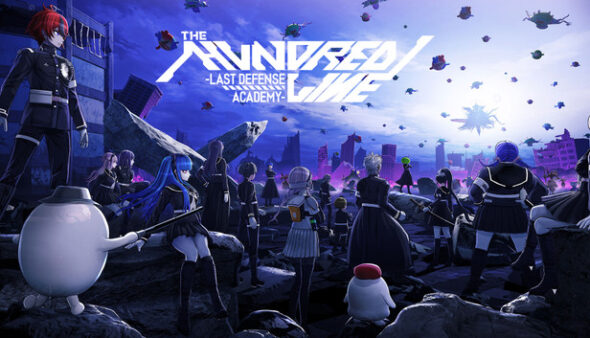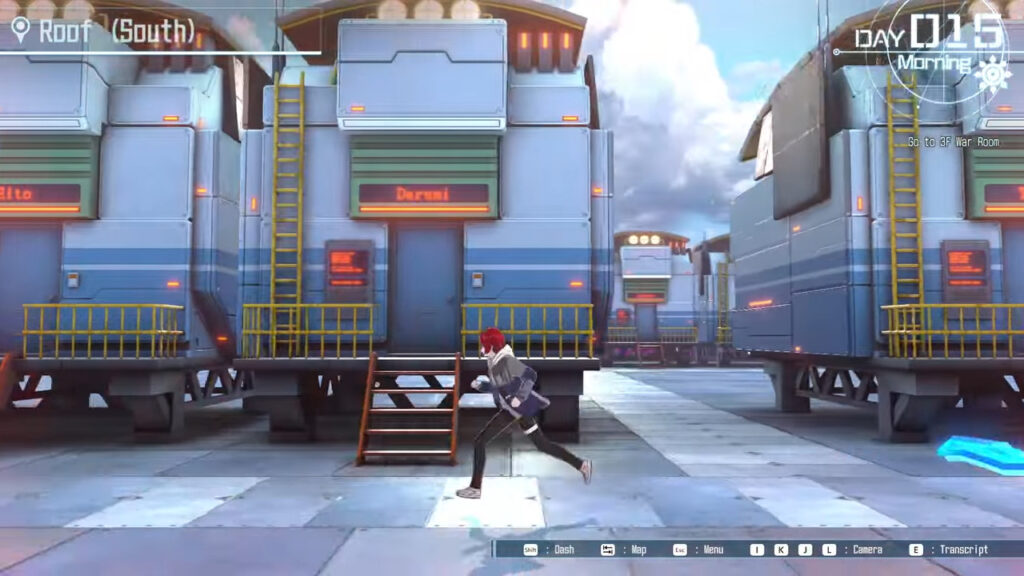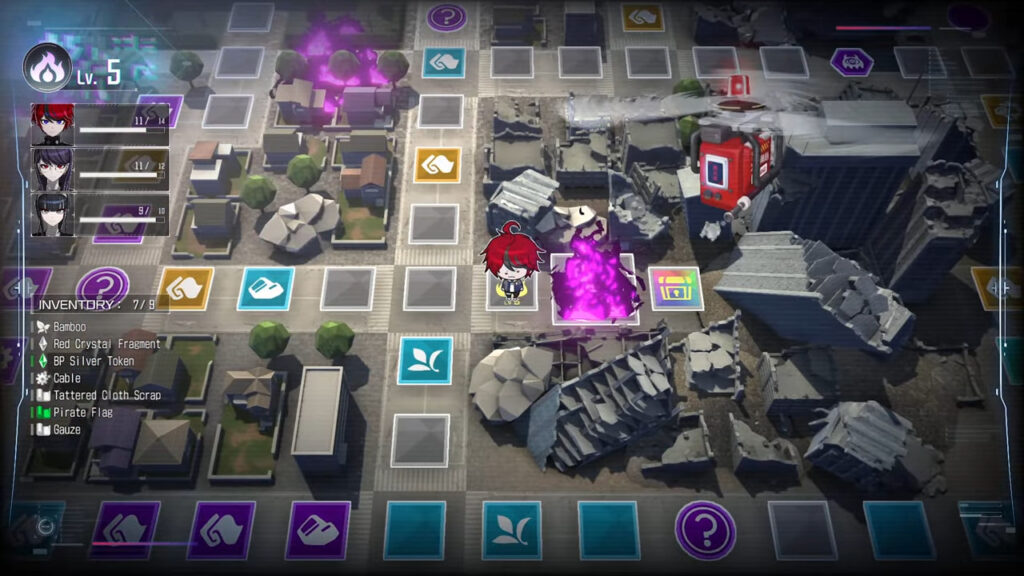
Developer: Too Kyo
Publisher: XSEED Games
Platform: Switch, PC
Tested on: PC
The Hundred Line: Last Defense Academy – Review
Too Kyo Games may be a relatively young studio, but with games like World’s End Club and Master Detective Archives: Rain Code, it has already built an impressive track record. If you’ve been keeping up with the creative minds behind the studio, that’s not really a surprise though. Too Kyo Games is being helmed by the creator, the art director, and the composer of the legendary Danganronpa series, after all. For their latest game, The Hundred Line – Last Defense Academy, Kazutaka Kodaka, the creator of Danganronpa, has teamed up with Kotaro Uchikoshi, the director of the Zero Escape games and Rain Code. Can Too Kyo games keep up its winning streak with this new title?
Story
A lengthy prologue sets up The Hundred Line’s plot. We’re introduced to our protagonist, Takumi, and his best friend Karua, two young students living in the Tokyo Residential Complex. At first glance, this place seems like your regular Japanese residential district. That illusion is quickly shattered though: the Tokyo Residential Complex is an underground facility with an artificial sky. Multiple times a day, residents are urged to hide in bunkers as monsters attack the city. It is during one of these attacks that Takumi finds himself in the line of fire as he tries to rescue Karua. The mysterious Sirei helps Takumi with defeating the monsters, but this results in our hero becoming subject to a Faustian deal. Sirei transports Takumi to the Last Defense Academy. Here, he joins a diverse group of other students who were recruited under similar circumstances.
Over the course of the next hundred days, this unlikely group must work together to defend the school. If they fail, it’s curtains for humanity. As if that wasn’t enough, Sirei seemingly has a hidden agenda of his own, and it’s up to Takumi and his new friends to discover the truth behind Sirei’s intentions as well. The Hundred Line’s overarching story is excellent, but the game’s true highlight is its cast. The 15 students who are forced to attend the Last Defense Academy each have over-the-top personalities. Your first impression may be that they embody trope characters, but as you get to know them better, you’ll find that they all have more depth to them. Granted, those early moments do have a sense of déjà vu to them, as they resemble those of Danganronpa, with Sirei standing in for Monokuma.
Graphics
Anyone familiar with Rui Komatsuzaki’s earlier work will immediately recognize his art style here, and with good reason. The Hundred Line’s character designs capture the larger-than-life personalities of the cast perfectly. The game’s subdued color palette and grungy aesthetic of the environments help drive the desolate setting home. Cutscenes are plentiful and gorgeous too, looking more like a 3D anime series than a video game if anything.
Sound
That feeling of an anime series is further driven home by the stellar voice work during those same cutscenes. Unfortunately, The Hundred Line isn’t fully voiced, although this is understandable given the sheer length of the game. Masafumi Takada returns from Rain Code to score the game, delivering a fantastic soundtrack. We found ourselves listening to the music outside of the game, and we wouldn’t be surprised if it ended up on your playlist too.
Gameplay
If you’re a fan of Danganronpa, then The Hundred Line’s ‘visual-novel-meets-RPG’ should feel very familiar. That’s not to say that the latter’s gameplay is a carbon copy of that of its predecessor, but there are enough similarities here that we’re comfortable calling The Hundred Line an outright spiritual successor to Danganronpa. It’s a narrative experience first and foremost, and there are 100 unique endings to discover. This does mean that most of your time with the game will be spent reading and making choices, although there are a plethora of other activities you can engage in. A playthrough unfolds over the course of 100 days, with a good chunk of these days being designated ‘Free Time’, during which you can build relationships with other students, train for combat, and explore the Last Defense Academy’s surroundings.
Choosing how you fill in your Free Time is significant, as it doesn’t just have an effect on how effective your squad is in combat, but it also has an influence on which ending you’ll get with your playthrough. Interacting with other characters feels reminiscent of Persona’s Social Link system. This will not only flesh out their personalities, but it also unlocks new combat moves for those specific characters. This does not make a character stronger per se, though. If you feel the need to grind out XP, you can instead partake in VR ‘practice’ battles. The most significant use of Free Time comes in the form of exploration. This takes on the form of a board game of sorts, where the aim is to reach checkpoints on a map. The different board game tiles are color-coded and can lead to fights against grunts, items, or making on-the-fly decisions with differing outcomes. If you can reach a checkpoint successfully, you can fast travel to it the next time, gradually exposing more and more of the surrounding area.
The turn-based combat system is fast-paced, and plays well into the wildly different characters that make up your squad. No two combatants fight in the same way, but their unique moves often synergize well with those of others, opening up all sorts of strategies. Without going into too much detail, you have a limited number of Action Points per turn, with each character action consuming these. Combat not only revolves around the most efficient use of AP, though, as you’ll need to keep an eye on your Voltage meter too. Landing attacks will build up Voltage. Once the meter is full, you can unleash a powerful attack or buff characters for the remainder of the battle. Finally, characters that are on the brink of defeat can sacrifice themselves, resulting in a glorious final stand-like attack. This all adds up to a dynamic combat system that never feels grindy or repetitive.
If there’s one thing that irked us about The Hundred Line’s gameplay, it is that the pacing can be very uneven, especially early on. This does make sense, given that the narrative takes centre stage here, but in the first few hours of the game, you’re lucky if you get to actually do something for five minutes apart from watching cutscenes. It’s a good thing that those cutscenes are an essential part of an engrossing story. The Hundred Line is a fairly lengthy title too, with our first playthrough taking up around 30 hours. While subsequent runs were significantly shorter, thanks to a better understanding of the game and the skipping of cutscenes, we still have plenty of time left to spend at the Last Defense Academy, thanks to the game’s sheer number of unique endings. The Hundred Line knocks it out of the park when it comes to replay value as well as getting bang for your buck.
Conclusion
It’s impossible to ignore the similarities between The Hundred Line and Danganronpa, but don’t let this fool you into thinking that Kazutaka Kodaka’s latest work is a carbon copy of his biggest success. The Hundred Line is a fantastic game that perfectly stands on its own two feet. If you’re really looking to nitpick, then the early game pacing could’ve been better, and being fully voiced would have been the cherry on top. Those are only very minor blips for what is a must-have game otherwise.










No Comments